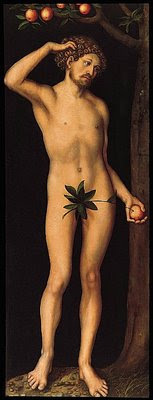 It might. The U.S. Supreme Court has asked the Solicitor General to submit a brief on the issue of whether states can enact more permissive limitations rules when they may conflict with the foreign affairs doctrine. Marei Von Saher has been pursuing her claim against the Norton Simon Museum over these two works by Lucas Cranach the Elder. Von Saher is seeking certiorari with the Supreme Court—and the court has not granted review, it just wishes to hear the position of the federal government first, before deciding whether to review the case.
It might. The U.S. Supreme Court has asked the Solicitor General to submit a brief on the issue of whether states can enact more permissive limitations rules when they may conflict with the foreign affairs doctrine. Marei Von Saher has been pursuing her claim against the Norton Simon Museum over these two works by Lucas Cranach the Elder. Von Saher is seeking certiorari with the Supreme Court—and the court has not granted review, it just wishes to hear the position of the federal government first, before deciding whether to review the case.  The 9th Circuit Court of Appeals ruled earlier this year that California may not set aside special rules for Nazi-era claims because it conflicted with the federal government's ability to govern foreign affairs. The claimant Marei Von Saher is the successor in interest to Jacques Goudstikker who bought the works in a 1931 auction in Berlin. The works remained there in Amsterdam until 1940 when the Nazis instituted a forced sale. After the war, Desiree Goudstikker reached a settlement with the Dutch government. She received some of her husband's inventory, but did not claim another set of works because that would have meant returning the purchase price received from the Germans.
The 9th Circuit Court of Appeals ruled earlier this year that California may not set aside special rules for Nazi-era claims because it conflicted with the federal government's ability to govern foreign affairs. The claimant Marei Von Saher is the successor in interest to Jacques Goudstikker who bought the works in a 1931 auction in Berlin. The works remained there in Amsterdam until 1940 when the Nazis instituted a forced sale. After the war, Desiree Goudstikker reached a settlement with the Dutch government. She received some of her husband's inventory, but did not claim another set of works because that would have meant returning the purchase price received from the Germans.The Dutch government transferred these Cranachs to George Stroganoff-Scherbatoff, the descendant of a noble Russian family who was thought to have lost the paintings to the Bolsheviks during the Russian Revolution. Stroganoff-Scherbatoff sold these works to the Norton Simon Museum in 1971. The 9th Circuit held first that California's special limitations rule for works looted during the Holocauset era, Sec. 354.3 conflicts with the foreign affairs doctrine. Though it does not conflict with Executive Branch policy via the President, it does conflict with a power reserved to the Federal government, as California created a "world-wide forum for the resolution of Holocaust restitution claims".
As a consequence, the claim was left to general limitations principles. In California the Discovery Rule applies. A claimant must bring her action within three years of discovering her claim. This means actual discovery, but also when a reasonably prudent claimant should have discovered she had a claim, and the work first went on display in 1977.
Yet even if the Supreme Court denies certiorari, Von Saher may have recourse under the new limitations period rules recently signed into law by Gov. Schwarzenegger, which attaches an actual discovery date on the beginning of an action, eliminating the sometimes difficult due diligence requirement.
Gov. Arnold Schwarzenegger last week signed into law a new art-theft bill that doesn’t mention the Holocaust but gives all claims seeking the return of stolen art from museums, galleries and dealers a better shot at withstanding the legal argument that they were filed too late. In suits over allegedly stolen art and other scientific, historic and cultural artifacts, the statute of limitations has been extended from three years to six, and the six-year clock starts running when the plaintiff first learned where the object was. Previously, a museum could argue that the clock began running when a work’s whereabouts was first publicized to the extent that someone seeking its return should have known about it then.
"Adam and Eve" went on display in 1977 when the Norton Simon opened, prompting Los Angeles Times art critic William Wilson to write that he had experienced “a plain shock of unmitigated aesthetic fulfillment” upon seeing them. Museum founder Norton Simon bought the Cranachs from an heir of Russian aristocrats in 1971, and The Times first reported on them in 1972, saying they were among the industrialist's holdings that were being loaned to Princeton University for an exhibition.
Von Saher’s attorney, Lawrence Kaye, said Monday that her legal team, which includes E. Randol Schoenberg, the Los Angeles attorney who in 2006 secured the return of five looted Gustav Klimt paintings from the Austrian government, will wait to see whether the U.S. Supreme Court reinstates the voided California Holocaust art law. If it does not, she would be able to amend her suit to proceed under the state's new art-theft law. But the new law also would allow the Norton Simon Museum to use legal grounds other than the statute of limitations to press its argument that Von Saher waited too long to claim "Adam and Eve."
- Mike Boehm, Norton Simon's disputed 'Adam and Eve' getting closer look from Supreme Court | Culture Monster | Los Angeles Times (2010), http://latimesblogs.latimes.com/culturemonster/2010/10/art-adam-eve-holocaust-norton-simon-.html (last visited Oct 5, 2010).
No comments:
Post a Comment